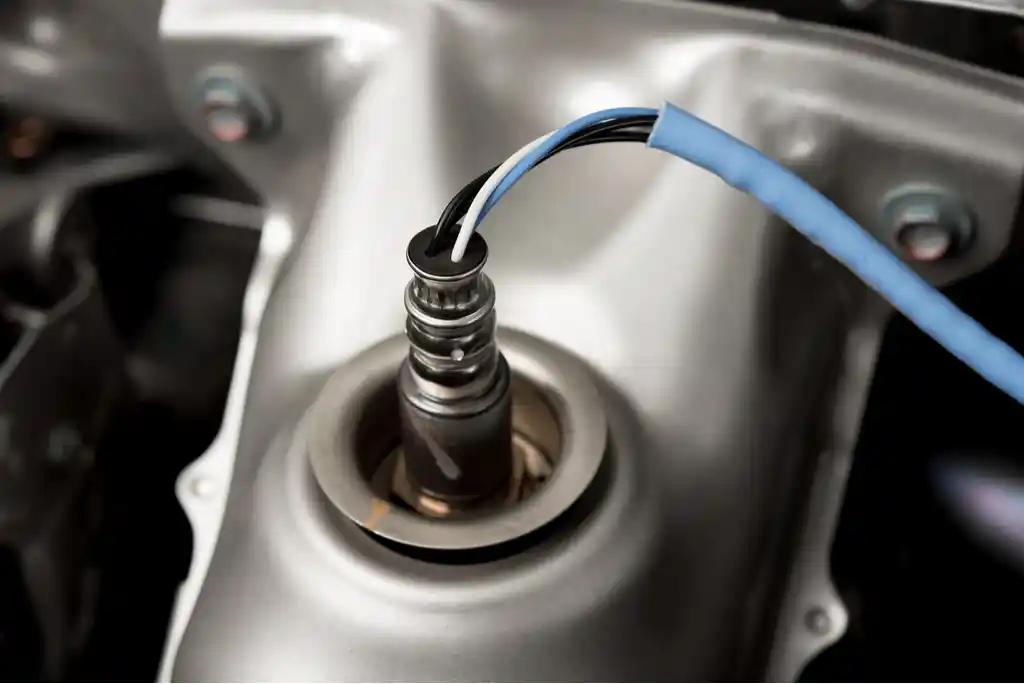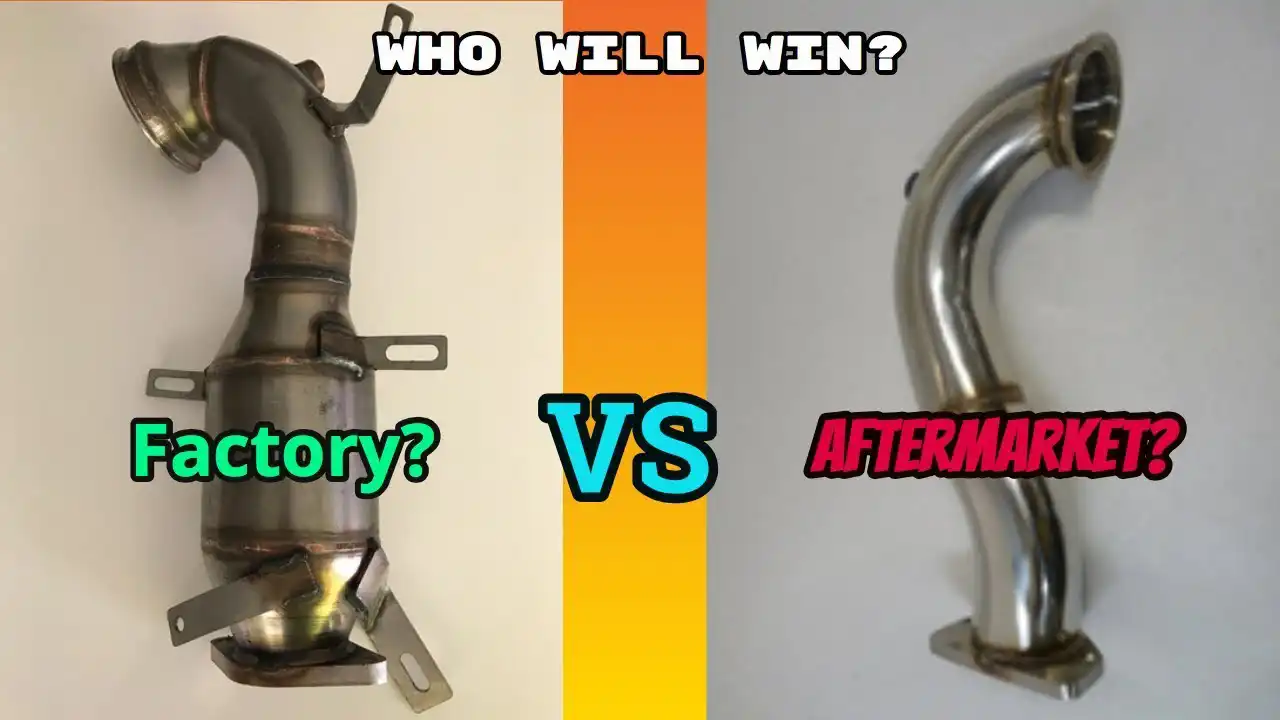
LAMBDA DELETE / CAT OFF
Lambda Delete/ Catalyst off Delete: Understanding the Impact on Your Vehicle’s Warranty
UNDERSTANDING LAMBDA SENSORS AND CATALYTIC CONVERTERS
Modern engines use Lambda sensors, also called oxygen sensors, along with catalytic converters to enhance fuel efficiency and minimize emissions. Oxygen concentrations in exhaust gases exiting engines are measured by these instruments.
The information is forwarded to the Engine Control Unit (ECU), which uses this information to change the air-fuel ratio to obtain the best combustion performance.
Catalytic converters are located in the exhaust system and utilize precious metals to transform harmful pollutants into less toxic substances before they are released from the vehicle.
BENEFITS AND CONSIDERATIONS OF LAMBDA:
REMOVAL AND CATALYST OFF TUNING
Sensors and components enable modern vehicles to meet emission standards, improve fuel efficiency, and enhance performance. Among these components, the lambda sensor and catalytic converter play critical roles. Tuning a car can involve removing the lambda and disabling the catalyst for some enthusiasts.
Benefits of Lambda Removal:
● Increased Engine Power and torque
● Enhanced Throttle Response
● I Improved Exhaust Sound
● Reduced Exhaust Temperatures
Considerations of Lambda Removal:
- Importance of Emissions and Environmental Impacts
- Fuel Efficiency
- Engine Longevity
- Legal Implications
- Warranty implications
- Emissions Testing
TECHNICAL PROCESS OF ECU MODIFICATION
ECU modification, commonly referred to as ECU remapping or tuning, entails changing the software in a vehicle's Engine Control Unit to enhance engine performance. This process typically includes:
1. Disabling care of the Lambda sensor feedback loops
2. Modifying such fuel maps to improve
3. Changing the timing tables of the ignition
4. Boost control parameter calibration (especially for turbocharged engines)
5. Removing efficiency monitors for the catalytic converter
ADDRESSING COMMON CONCERNS
Many vehicle owners express concerns about the safety, legality, and longevity of ECU modifications. At Ecu Chiptuning Files, we take these concerns seriously. We design our tuning files within the safe limits of the vehicle's components, ensuring durability and compliance with emission standards. The increase in emissions is a result of price efficiency improvements, and customers should be aware of the local regulations regarding such modifications.
ECU-CHİP TUNİNG FİLES EXPERTISE
Ecu Chiptuning Files, with years of automotive tuning experience, is a leader in ECU modification services. Our team of expert engineers and tuners uses the latest technology to provide customized solutions tailored to each vehicle’s specific needs.
Each tuning file is thoroughly tested to guarantee the best performance and safety. Tuning thousands of vehicles successfully has built our reputation for excellence and reliability.
CUSTOMER PROCESS FOR OBTAINING AND INSTALLING
TUNING FILES
1. Registration and Credit Purchase:
● Register on our site for a Ecu Chiptuning Files account.
● Purchase credits for the service you would wish to target
2. ECU Read-out and File Upload:
● Connect the Alter Car to the vehicle's OBD II Connector.
● Use the bender’s tool to extract the ECU information.
● Post the ECU Extracted Info from the Fon to our Offsite Web Loading Board
3. File Processing and Modification:
● The specialists from our company will provide feedback on how the ECU data will be modified.
● Based on the structure of the vehicle and the tuner requirement, the tuning file is made
4. File Delivery and Installation:
● You will also get the tuning file and installation _ and be able to log in to your account.
● Then, flash the modified tuning file, which is provided by the software, over to the ECU
5. Support and Fine-tuning:
● Ecu Chiptuning Files offers continuous support after the tuning process, including file adjustments or reversion to stock settings if needed.
This streamlined process ensures that customers can efficiently obtain and install high-quality tuning files while receiving full support from Ecu Chiptuning Files team.
ECU-CHİPTUNİNG FİLES COMMITMENT TO CUSTOMER
SATISFACTION
Our goal at Ecu Chiptuning Files is to make our customers happy. We offer continuous support to help you feel satisfied with your ECU modifications. Our process includes everything from the first consultation to support after installation, and we pride ourselves on providing high-quality service and expert guidance.
Our team is available to answer any questions or address any concerns, ensuring that you have a seamless and positive experience with our tuning services.

FAQs
How does Lambda removal impact fuel efficiency?
Lambda removal, which is typically used to remove the oxygen sensor from a vehicle's exhaust system, can have significant implications for fuel efficiency and overall engine performance.
What are the potential risks of catalytic converter delete tuning for engine longevity?
Tuning the catalyst can raise exhaust temperatures, which might result in valve and piston damage over time. It can also lead to quicker wear on engine parts because of changes in how combustion occurs.
How do Lambda sensors affect overall engine performance?
Lambda sensors play a vital role in delivering important data for maintaining optimal air-fuel ratios. They assist the ECU in fine-tuning fuel delivery on the fly, promoting efficient combustion, and enhancing performance in different operating situations.
What modifications are required to accommodate Lambda removal?
To remove the Lambda sensor, you usually need to remap the ECU to turn off the sensor's feedback loops, tweak the fuel maps, and change the ignition timing tables. Occasionally, it may also be necessary to physically remove or bypass the sensors.
Can Lambda/o2 Off and catalytic converter delete tuning void my vehicle warranty?
Yes, removing the lambda sensor and altering the catalyst tuning can potentially void your vehicle's warranty. Vehicle manufacturers frequently include specific clauses in their warranty agreements that stipulate that any modifications to the emissions system, including changes to the lambda sensor and catalytic converter, can result in the warranty being voided.
What are the legal implications of Lambda/o2 Off and catalytic converter delete tuning?
Lambda removal and catalyst off-tuning can have significant legal implications, primarily concerning environmental regulations and vehicle emissions standards.
How does catalytic converter delete tuning affect exhaust sound?
Controlling vehicle emissions and complying with environmental regulations are important functions of catalytic converters. When it comes to "tuning" a vehicle, particularly in the context of performance modifications, off-tuning the catalyst can indeed have a noticeable impact on exhaust sound.
What performance gains can be expected from Lambda/o2 removal and catalyst off tuning?
Some of the expected benefits are enhanced horse power and newtor meter, better throttle response, and lower ex-prechow facetor. However, results can vary depending on the type of car and the tuning approach used.
Are there any alternatives to Lambda/o2 removal for improving performance?
Yes, there are other options, such as high-flow catalytic converters, performance air intakes, and professional tuning with ECU custom programming that works with Lambda.
How does Lambda removal affect emissions testing?
Removing the lambda system greatly raises emissions levels and may lead to a vehicle not passing emissions tests in regions where such tests are mandatory.
Can Lambda/o2 Off and catalytic converter delete be reversed?
Yes, Lambda removal and catalyst off-tuning can generally be reversed, but it may depend on how the modifications were made and the expertise of the mechanic performing the reversal.
What are the symptoms of a failing Lambda/o2 sensor?
Signs that there may be an issue include lower fuel efficiency, rough idle or stalling, engine misfires, an overheating catalytic converter, and the check engine light turning on.
How often should Lambda/o2 sensors be replaced in a stock vehicle?
Lambda sensors, also known as oxygen sensors, typically require replacement every 60,000 to 100,000 miles in cars, subject to specific conditions.
Does Lambda removal affect turbocharger performance?
Removing the lambda sensor can affect how a turbocharger performs by changing the makeup and temperature of the exhaust gases. It's important to tune the system correctly to ensure it operates safely.
What is the difference between upstream and downstream Lambda/o2 sensors?
Sensors located upstream analyze exhaust gases prior to the catalytic converter, whereas detectors positioned downstream assess the efficiency of the converter.
How does catalytic converter delete tuning impact exhaust gas temperatures?
Taking out the catalytic converter can raise exhaust gas temperatures, potentially impacting the lifespan of the engine and exhaust parts.
Can Lambda/o2 Off and catalytic converter delete tuning improve towing capacity?
These changes might boost power, but they won't necessarily enhance towing capacity and could potentially affect engine reliability when handling heavy loads.
What precautions should be taken when performing Lambda/o2 Off and catalytic converter delete tuning?
It's important to collaborate with skilled tuners, utilize top-notch components, and confirm that installation is done correctly. Additionally, it's advisable to check engine parameters regularly.
How does Lambda/o2 removal affect cold start performance?
Removing the lambda sensor can have an adverse effect on cold start performance because the ECU no longer receives the critical feedback needed to adjust the air-fuel mixture during warm-up.
Lambda/o2 sensors even after catalyst catalytic converter removal?
Even though fuel management doesn't directly use Lambda sensors' output, keeping them is helpful for tuning and diagnostics.
If you have further questions about DPF problems, do not hesitate to ask us
(Note: It is recommended that you consult an expert for more information on the legal and technical aspects of CAT removal. This process can void your vehicle's warranty and cause environmental damage.)
